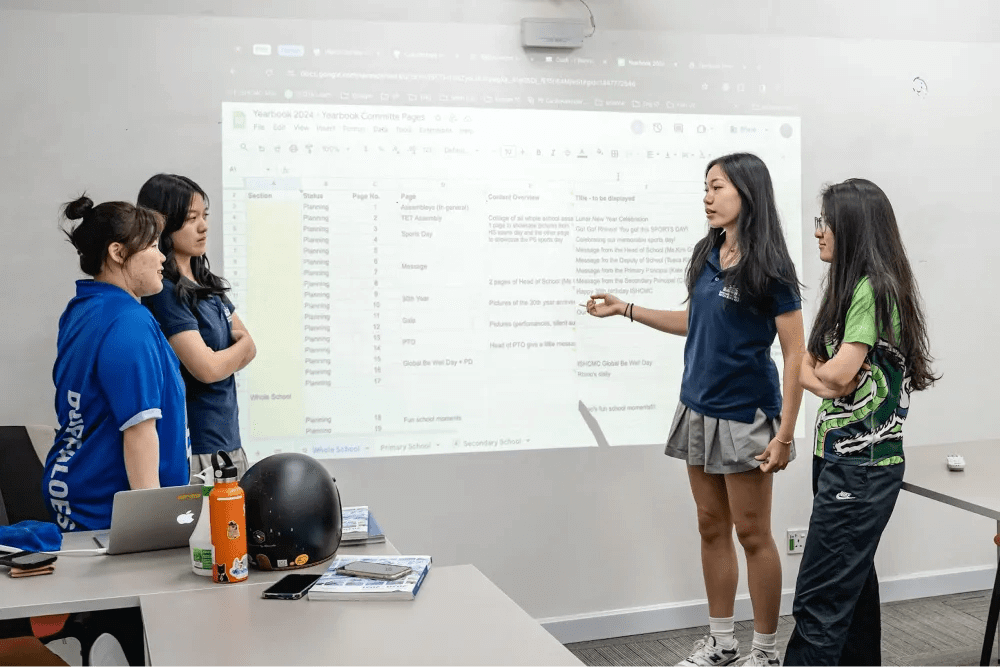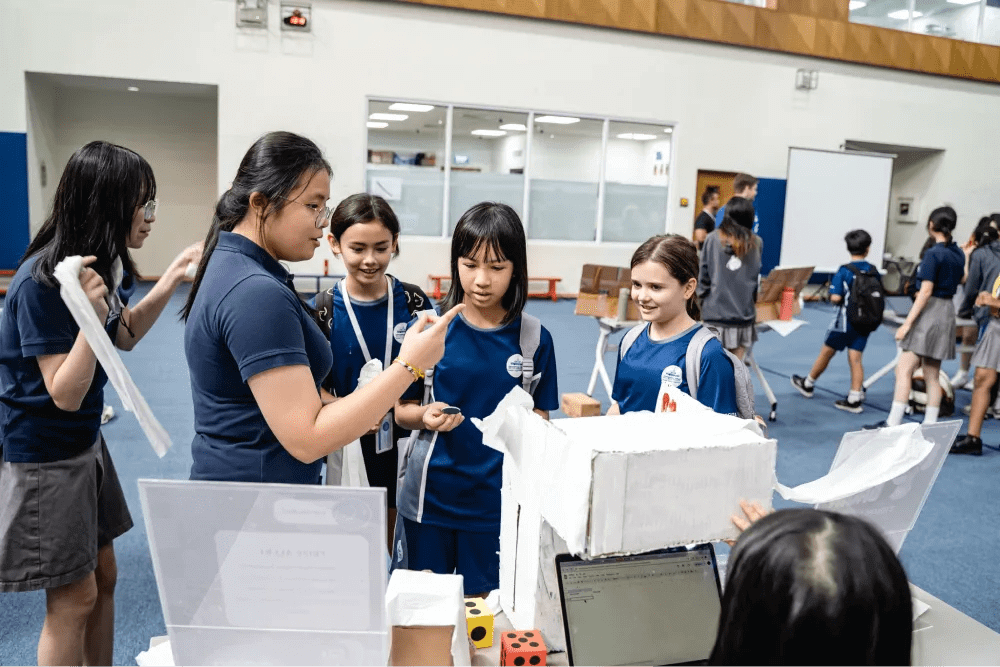Top 8 Proven Strategies for Developing Problem-Solving Skills in Students
This article explores eight proven strategies that enhance problem solving capabilities in students, gives problem solving skills examples for students, and provides a guide on how to improve problem solving skills in students.
Educators who use these strategies with their students can give them the knowledge and abilities to approach challenges bravely and creatively, establishing the foundation for lifelong learning and adaptability.
1. Follow the Process
The problem solving process is a structured approach that systematically guides students to tackle challenges. It involves:
- Identifying the Problem: Clearly state the problem. What are you trying to solve? Be specific about the issue(s).
- Considering Different Perspectives: Practice active listening to understand various viewpoints.
- Brainstorming: Generate potential solutions without evaluation.
- Evaluating Options: Assess the pros and cons of each solution.
- Selecting the Best Solution: Choose the option with the highest potential for success and consider its consequences.
- Implementing the Decision: Develop a plan and execute it.
- Monitoring Progress: Track the implementation and adjust as necessary.

2. Review Previous Challenges
Encourage students to reflect on past experiences when they encountered similar problems. Students can draw from their previous solutions by asking themselves, “Have I ever seen a problem like this before?”. Self-reflection can promote self-reliance and build confidence in problem solving skills for students. When instructors have pupils journal their challenges and solutions, it can help speed up the process.

Additionally, discussing case studies or real-life examples in class allows students to apply their knowledge to new situations. Reviewing past challenges strengthens students’ problem solving abilities and helps them better understand how to approach various problem types.
3. Implement “3 Before Me” Rule
Implementing the “3 Before Me” rule can foster a collaborative learning environment where students support each other in problem solving endeavors. Educators promote autonomy, resourcefulness, active peer learning, and communication by encouraging students to seek peer help with 3 classmates before approaching the teacher.

During class activities, teachers might model the application of this rule and explain its rationale. Through the practice of “3 Before Me,” students can use their peers’ combined knowledge and experience, which improves their problem solving skills and builds a sense of support and community.
4. Enhance Problem Solving Elements
Provide kids with options in various circumstances to encourage them to make judgments. Let them weigh their advantages and disadvantages, stimulating critical thinking and decision-making skills.
Incorporate decision-making opportunities into everyday activities, such as selecting food or planning leisure activities. Students who participate in these exercises can improve their analytical skills and learn to predict the effects of their decisions.

Furthermore, educators can introduce structured decision-making frameworks, such as cost-benefit analysis or SWOT analysis, to provide students with a systematic approach to evaluating options. Only when educators empower students with these tools and methods can the students make informed decisions and efficiently overcome complicated challenges.
5. Integrate Psychological Theories
Integrating psychological theories into problem solving approaches can broaden students’ perspectives and enhance problem solving skills. For instance, the “psychological distancing” theory suggests detaching emotions from problem solving to facilitate objective analysis.
Educators can assist students in getting a better knowledge of underlying issues, seeking potential solutions, and eliminating the chances of biases or preferences by encouraging them to approach situations objectively.

Similarly, the “heuristic framework” can help students break down complex problems into manageable components, facilitating strategic planning and problem decomposition.
Educators can incorporate components of this framework, such as backward planning, into classroom activities to encourage students to approach problems systematically. By applying these theories in practical contexts, students can develop adaptable problem solving strategies across various domains and situations
Furthermore, educators can leverage established pedagogical frameworks, such as the International Baccalaureate (IB) programme of ISHCMC, to promote critical thinking and problem solving skills for students. ISHCMC’s IB curriculum emphasizes inquiry-based learning, encouraging students to explore complex issues, ask probing questions, and develop analytical reasoning skills.
ISHCMC educators promote active learning by engaging students in inquiry-based activities, helping them develop a thorough comprehension of essential topics. The IB’s holistic approach to education also prioritizes the entire student body’s academic, emotional, and social growth.
6. Create an Open Environment
Creating a supportive environment for students to express ideas freely fosters problem solving skills. Educators achieve this through open communication, risk-taking encouragement, and valuing diverse perspectives. With constructive comments and positive reinforcement, educators assist students in developing resilience and self-assurance when confronting obstacles.

Additionally, incorporating collaborative learning activities, such as group discussions and peer feedback sessions, can enhance problem solving skills by encouraging students to engage with different viewpoints and approaches. Educators create an open, non-critical setting to empower students to explore innovative solutions and develop creative problem solving strategies.
7. Be a Good Role Model
Educators, as role models, can significantly shape students’ problem solving skills through their behaviors and attitudes. By demonstrating effective techniques and decision-making processes, teachers offer effective guidance to students. Involving students in discussions and activities allows them to practice critical thinking and problemsolving in real-world scenarios.

For instance, educators can create opportunities for students to observe problem solving in action, such as case studies or simulations. By modeling structured problem solving approaches and offering feedback and encouragement, educators inspire students to develop their problem solving abilities and become confident, independent learners.
8. Evaluate and Share Feedback
Educators should observe students’ problem solving processes, offer timely feedback, and encourage continuous reflection and improvement to identify strategies, specify areas for growth, and provide support.

Constructive feedback that highlights students’ strengths and areas for improvement helps refine their problem solving skills. A culture of ongoing feedback and reflection enables students to take responsibility for their education and develop the resilience and adaptability to navigate challenging situations effectively.
Through observation, assessment, and feedback, educators help students become competent and self-assured problem solvers.
ISHCMC – Nurturing Future Problem Solvers
How to teach problem solving skills for students is paramount in preparing them for the challenges they will encounter academically and in their future careers. By implementing proven strategies such as following a structured problem solving process, reviewing previous challenges, and encouraging an open and collaborative learning environment, educators can empower students to become confident and adept problem solvers.

At ISHCMC, we strive to nurture future problem solvers through our rigorous academic standards and holistic approach to education.
As the first fully authorized IB World School in Ho Chi Minh City, we provide students opportunities to develop their problem solving skills through inquiry-based learning, collaborative projects, and real-world applications.
Apply to ISHCMC today to nurture your children for success in a rapidly changing world!
FAQs on Problem Solving Skills for Students
Besides how to assess problem solving skills in students, and examples of problem solving skills for students, we will delve into other common questions about students’ problem solving skills for academic and personal growth.

1. What are problem solving skills for students?
Problem solving skills for students involve more than just applying learned procedures. entail understanding the environment, identifying complex problems, reviewing information, developing and evaluating strategies, and implementing solutions to achieve desired outcomes. True problem solving involves applying a method to a specific problem under certain conditions that the solver hasn’t encountered before.
Teaching problem solving should involve modeling effective methods, contextualizing skills within specific subjects, aiding students in problem understanding, allocating sufficient time for practice, and prompting analytical thinking through questions and suggestions while linking errors to misconceptions for learning.
This approach promotes critical thinking and decision-making abilities crucial for addressing genuine challenges.
2. At what age do children start developing problem solving skills?
Problem solving skills begin to develop around the age of 2 to 3. By age three, children start to apply problem solving skills in particular situations. However, very young children’s problem solving skills are constrained by three factors: a short attention span, challenges in understanding cause-and-effect relationships, and lack of experience in tackling problems independently.
Such foundational skills continue to develop and become more sophisticated throughout childhood and adolescence. Influences such as education, personal experiences, and overall cognitive development shape and enhance problem solving abilities.
By adolescence, individuals usually have a more developed capacity to handle problems at a higher level of complexity, think critically, and come up with innovative solutions.
3. What are the benefits of problem solving skills for students?
Problem solving skills offer numerous benefits for students:
- Improved Academic Performance: Enhance critical and analytical thinking, improving academic results across subjects.
- Increased Confidence: Encourage independence, fostering resilient learners unafraid of challenges, preparing them for future complexities.
- Real-World Preparedness: Equip students to tackle evolving challenges by fostering collaboration, respect for diverse perspectives, and innovative problem solving approaches.
- Distinguishing Between Issues: Help differentiate solvable problems from unsolvable ones, promoting effective decision-making.
- Enhanced Understanding: Encourage deeper comprehension of causality, fostering resilience and adaptability.
- Social and Situational Awareness: Promote better time management, patience, curiosity, resourcefulness, and determination.
- Employability: Develop essential skills for working in teams, adapting to new and unique challenges, and meeting employer demands.






